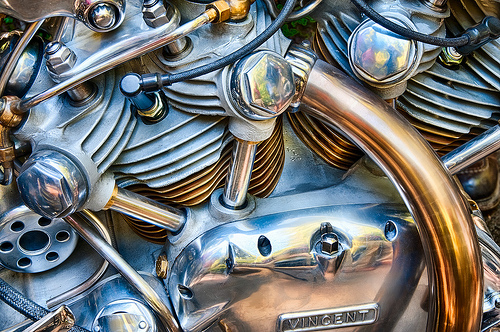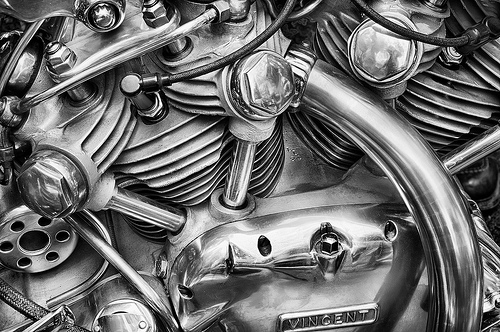The other day I was lucky enough to get an opportunity to photograph a Falcon Motorcycle. These motorcycles are one-of-a-kind completely handmade works of art. As I particularly enjoy photographing machinery it was a real treat getting to photograph a machine that had been so carefully and artfully constructed.

To capture the subtle shapes and forms of the motorcycle’s engine it will surprise no one who reads my blog to learn that I used High Dynamic Range (HDR) techniques. This image was created from seven exposures. Each exposure was shot at f/11 and ISO 200. I used a tripod, and manually bracketed the shutter speeds in a range from two seconds to 1/200 of a second.

In post production I combined the exposures using Nik Software’s HDR Efex Pro 2 and hand-layering in Photoshop.
My original thought had been to produce a monochromatic final image, but when I saw the results in color I decided the color version looked pretty good too!
I converted the color version to black and white using Nik Silver Efex 2, Photoshop Black & White adjustment layers, and a monochromatic HDR version processed from the original seven files.
These images will make stunning prints I think on Moab’s wonderful pearlized metallic Slickrock paper.
By the way, I’ve been asked a number of times recently why I often choose to shoot my HDR sequences using manual shutter speed bracketing rather than in-camera auto bracketing (which at first blush would seem easier). The answer, as I explain on page 76 of Creating HDR Photos, is that auto bracketing programs do not in fact capture enough extended dynamic range. So if you want to create HDR multi-shot imagery like mine you, too, will need to bracket manually. I plan to write a future blog story on the mechanics of keeping the camera absolutely still while one manually brackets.
Pingback: Handcrafting Digital Black & White